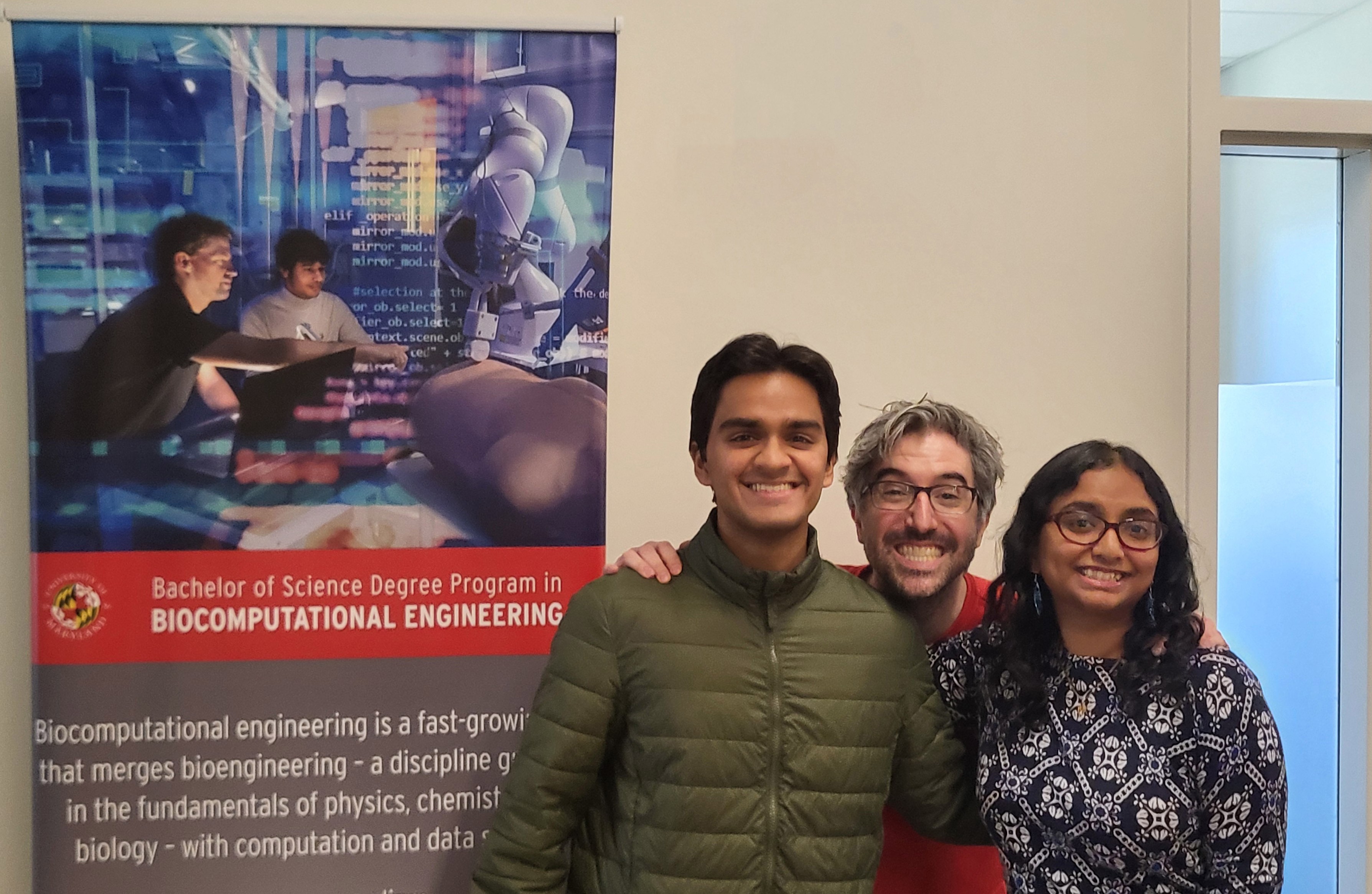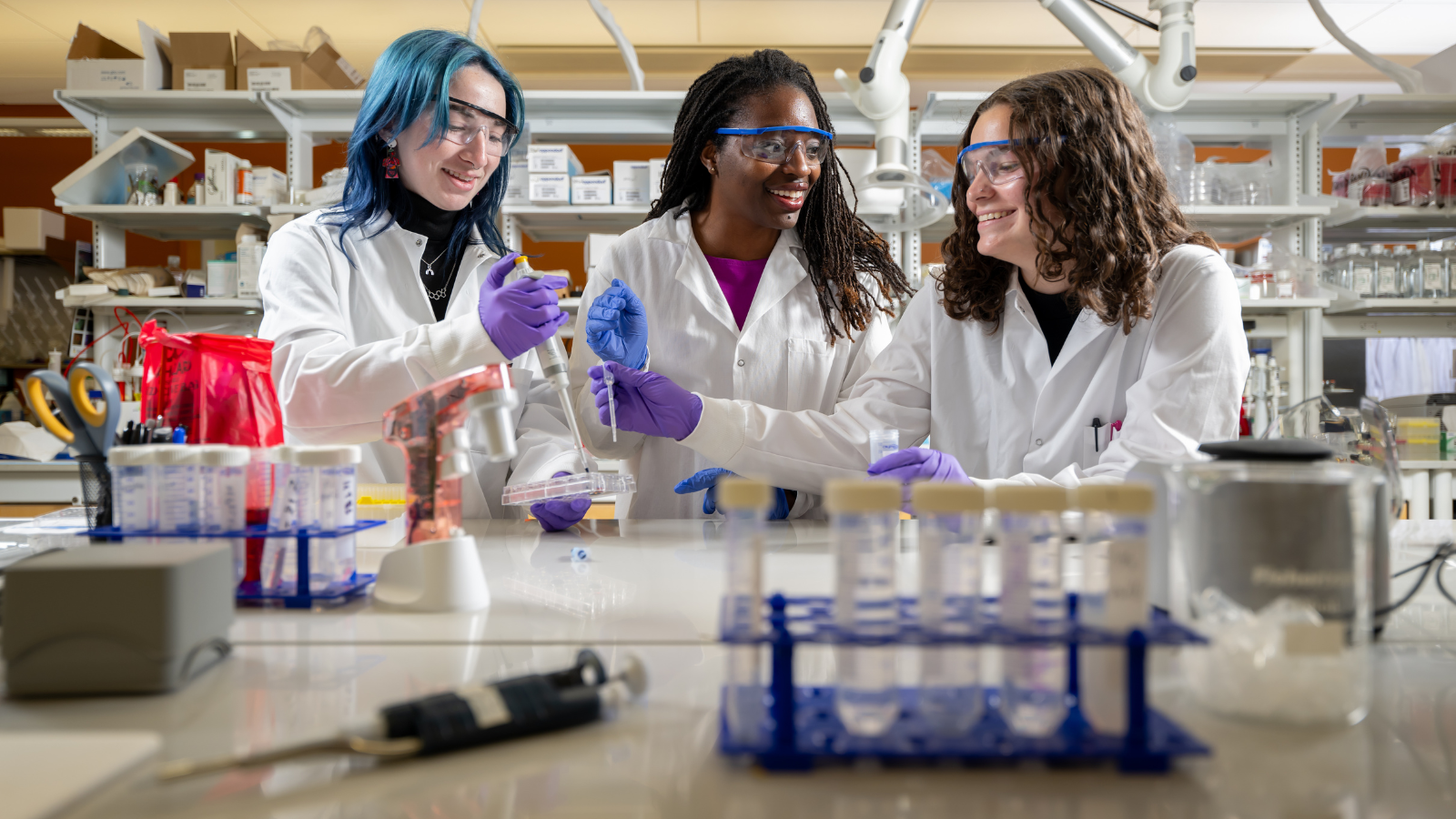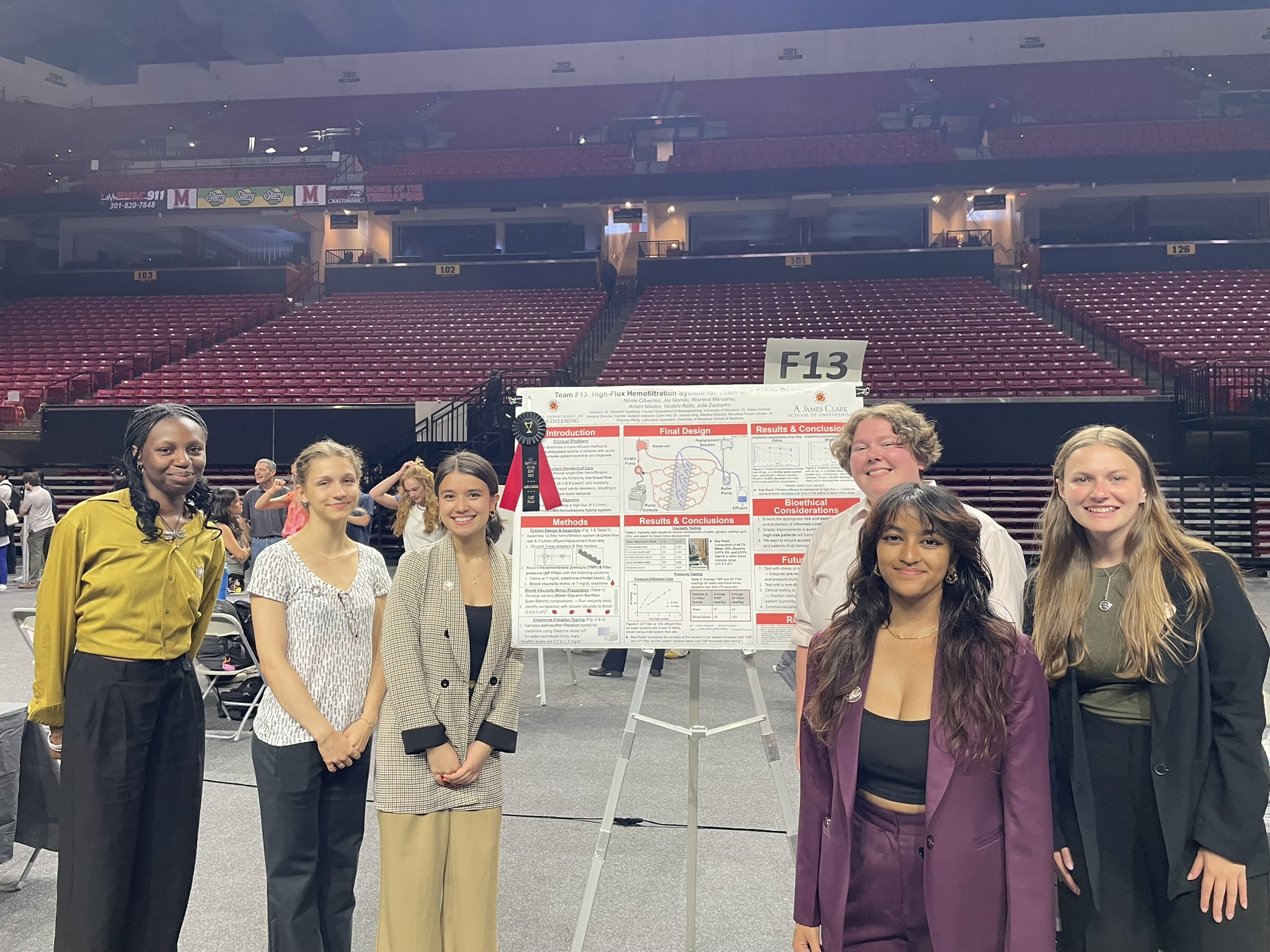News Story
Student Spotlight: Anika Dasgupta
 “I decided to switch to bioengineering after my first semester, as I was interested in actually applying the biology I learned and cherished to design intriguing technologies to treat today’s problems.”
“I decided to switch to bioengineering after my first semester, as I was interested in actually applying the biology I learned and cherished to design intriguing technologies to treat today’s problems.”
Undergraduate researcher and Fischell Department of Bioengineering honors student Anika Dasgupta has always loved biology but didn’t always know she wanted to pursue bioengineering. Now a junior and member of the Huang Lab for Nanotechnology and Optical Therapeutics, Dasgupta transitioned from a neuroscience major to bioengineering early in her academic career, driven by a desire to apply biological knowledge to address contemporary challenges through technology.
Dasgupta’s decision to attend the University of Maryland was influenced by the institution's reputation as a leading research university, offering ample opportunities for academic and personal growth. She heavily values hands-on research experience, evidenced by her two-time selection as an ASPIRE Research Fellow—a scholars program for industry-focused engineering research that connects undergraduate students to real-world engineering projects.
“Research is one of the most direct ways to learn about a field,” she says, in her advice to aspiring bioengineers. “You’re exploring the field on the very forefront of what is known and trying to help expand the knowledge and refine understanding of it.”
 Dasgupta recalls her first project at the Huang Lab as a pivotal experience. Teaming up with Dr. Aaron Sorrin, a fifth-year Ph.D. student at the time, they worked on synthesizing polymer nanoparticles and photo immunoconjugates, which became a published study in the Cell and BioScience journal.
Dasgupta recalls her first project at the Huang Lab as a pivotal experience. Teaming up with Dr. Aaron Sorrin, a fifth-year Ph.D. student at the time, they worked on synthesizing polymer nanoparticles and photo immunoconjugates, which became a published study in the Cell and BioScience journal.
Currently, Dasgupta is immersed in a collaborative project with Dr. Payal Srivastava at the Huang Lab, developing photoactivatable triple-combination liposomes.
“I've been able to apply my experience with previous projects and work closely with Dr. Srivastava to plan and execute experiments for the project.”
Dasgupta points out that the best way to overcome the challenges of pursuing subjects like bioengineering is through collaboration.
“Bioengineering, and engineering as a whole, can be a difficult discipline, but it's also highly collaborative! Take advantage of that collaborative nature by asking for help from your TA’s, peers, or professors if you don’t understand something”
 Outside of the classroom, Dasgupta is deeply involved in various extracurricular activities and student organizations such as the Biomedical Engineering Society (BMES) and Alpha Eta Mu Beta (AEMB) Honor Society. She is also the Director of Human Resources for the newly relaunched undergraduate research journal The Catalyst.
Outside of the classroom, Dasgupta is deeply involved in various extracurricular activities and student organizations such as the Biomedical Engineering Society (BMES) and Alpha Eta Mu Beta (AEMB) Honor Society. She is also the Director of Human Resources for the newly relaunched undergraduate research journal The Catalyst.
 In her spare time, she immerses herself in diverse interests, including culinary adventures (she often hunts for local edible, wild mushrooms!), language learning (she knows three!), Bharatanatyam (a classical Indian dance), and impressive memorization challenges (including world capitals, morse code, Pi, and the codon chart!). Dasgupta is also grateful for and committed to her support system of friends and family.
In her spare time, she immerses herself in diverse interests, including culinary adventures (she often hunts for local edible, wild mushrooms!), language learning (she knows three!), Bharatanatyam (a classical Indian dance), and impressive memorization challenges (including world capitals, morse code, Pi, and the codon chart!). Dasgupta is also grateful for and committed to her support system of friends and family.
“I’m grateful to my fantastic family and friends for all of their support,” she says. “They truly double my joys and halve my sorrows. They are wonderful people, and I’m so lucky to have them.
Published March 7, 2024





